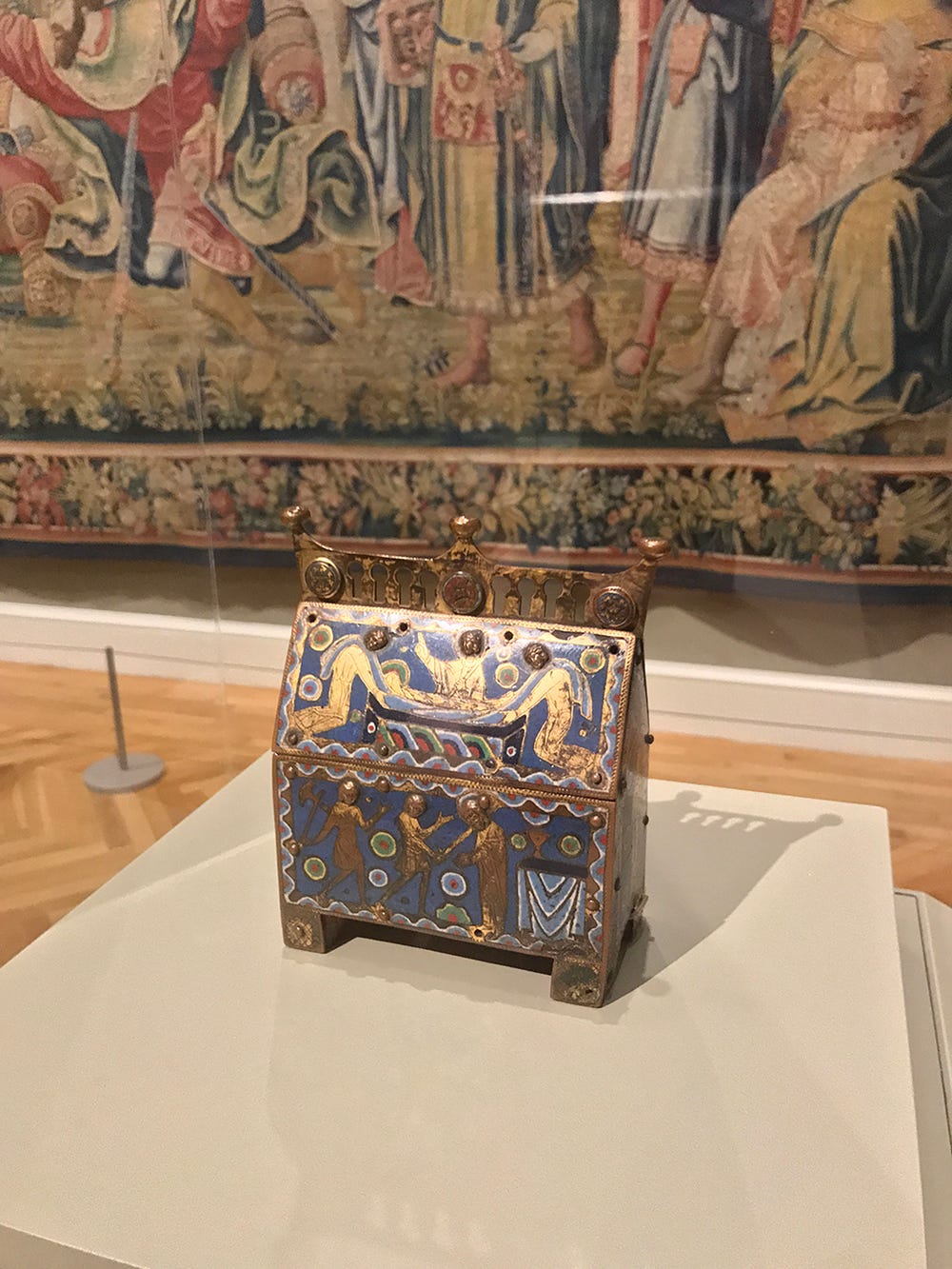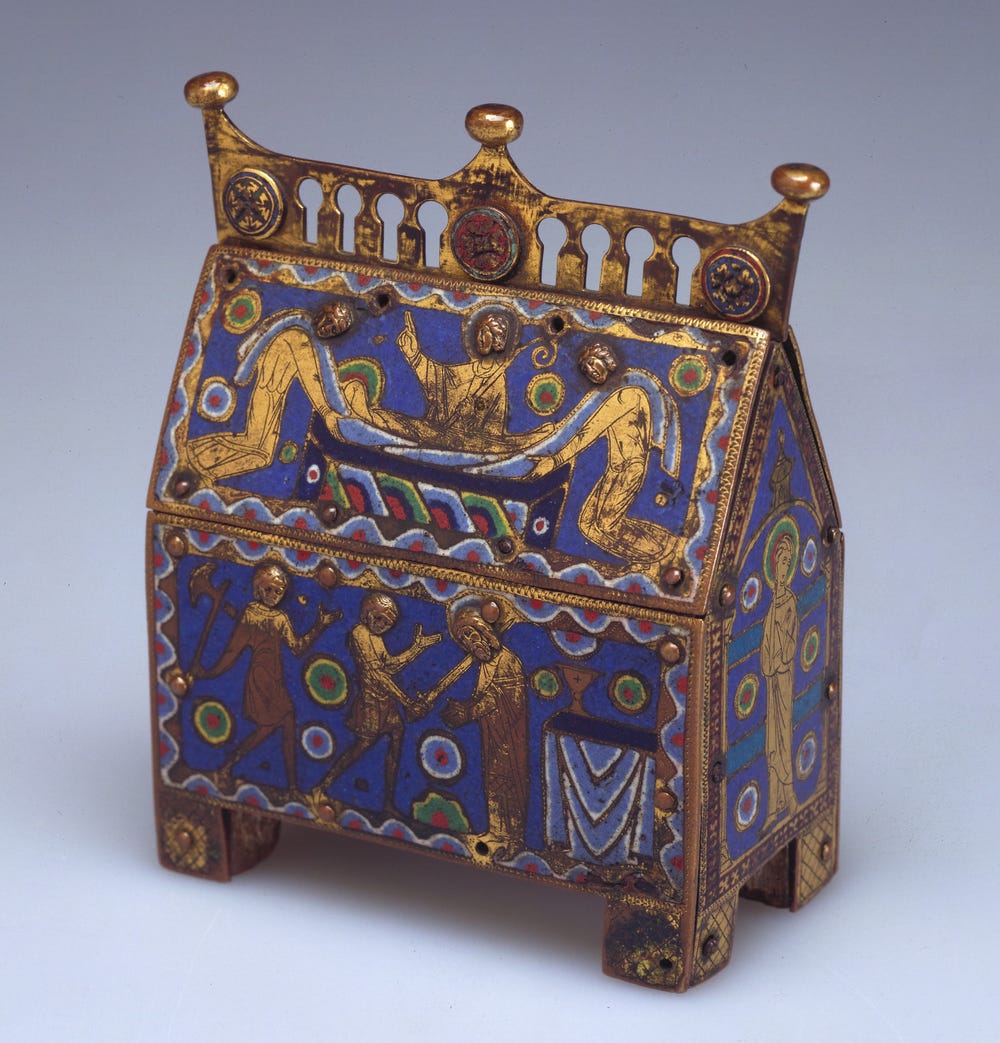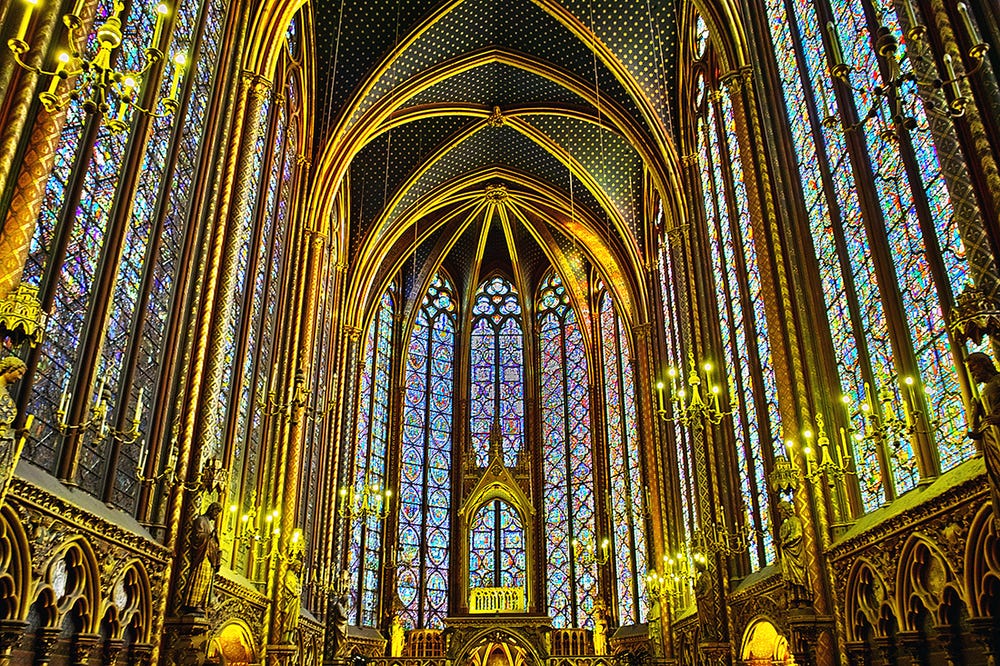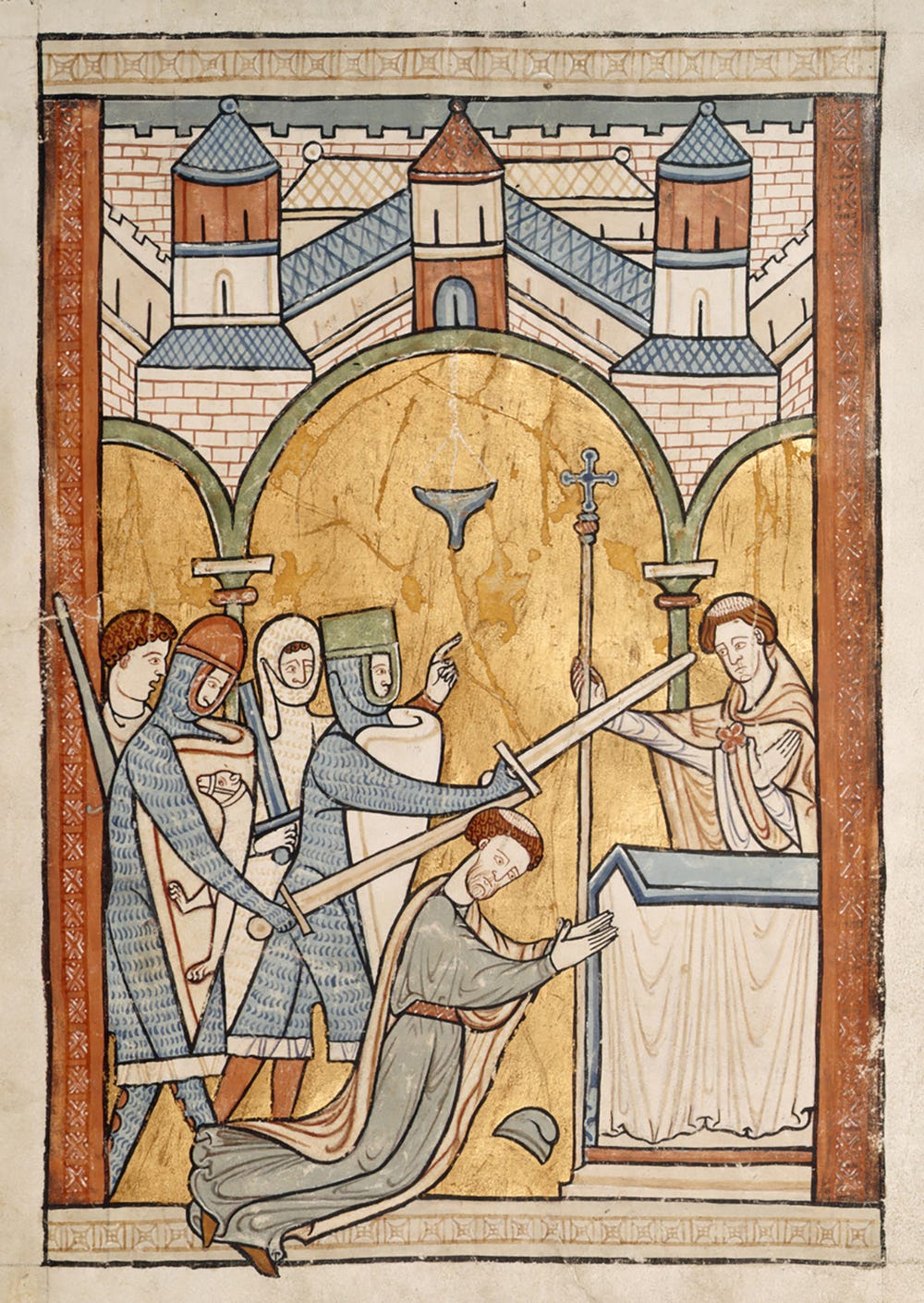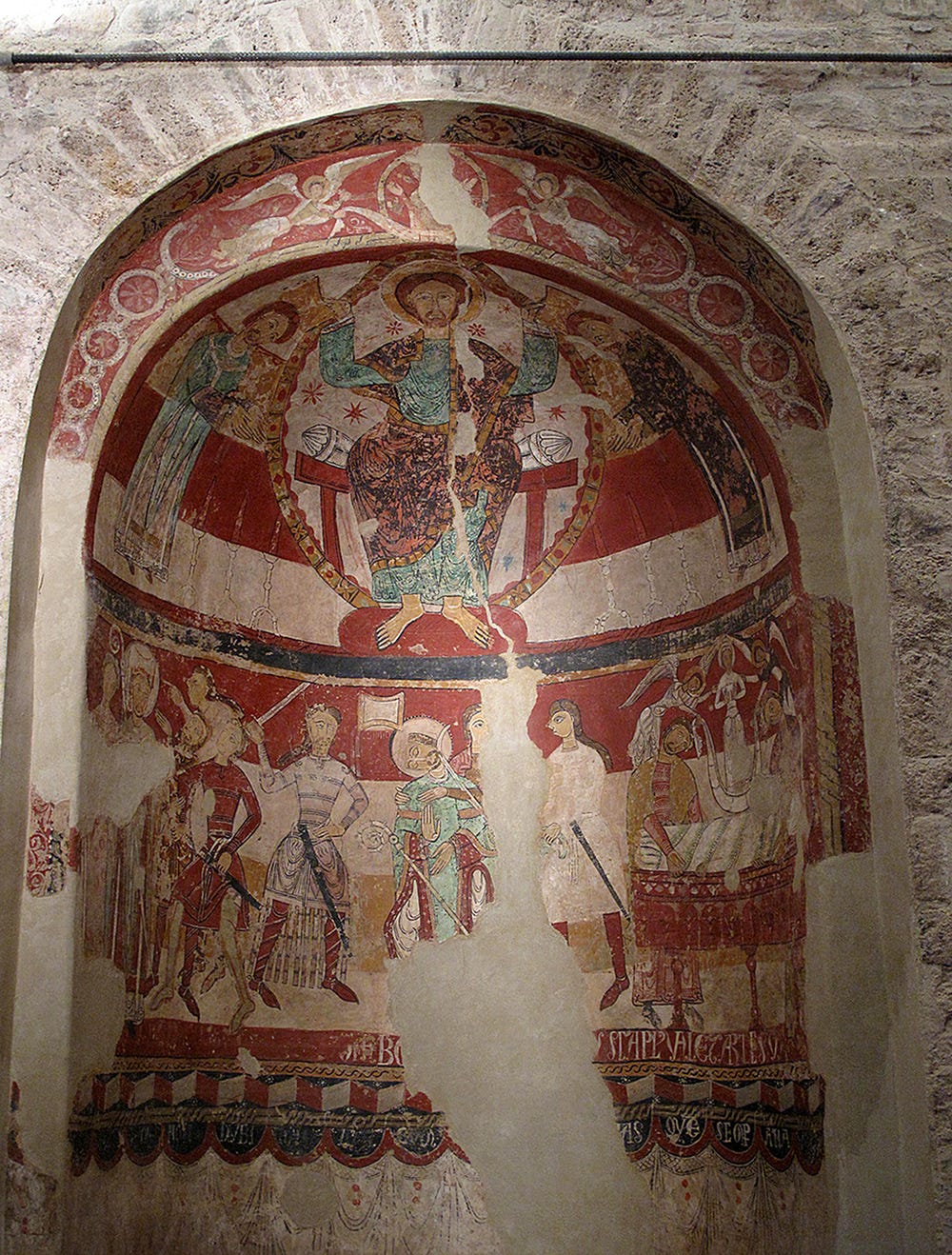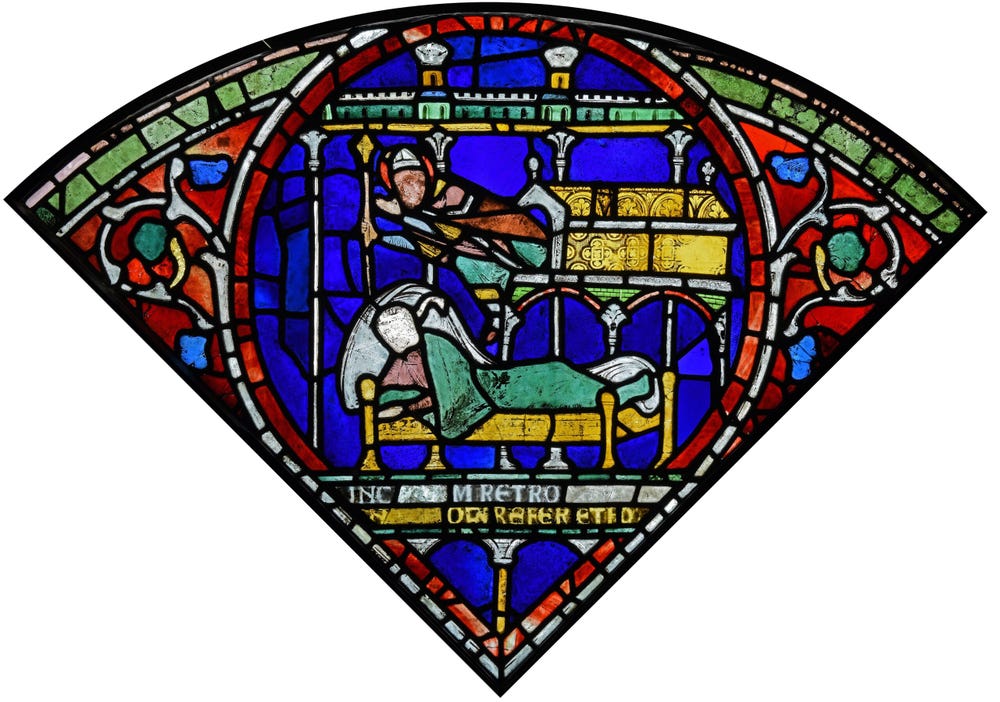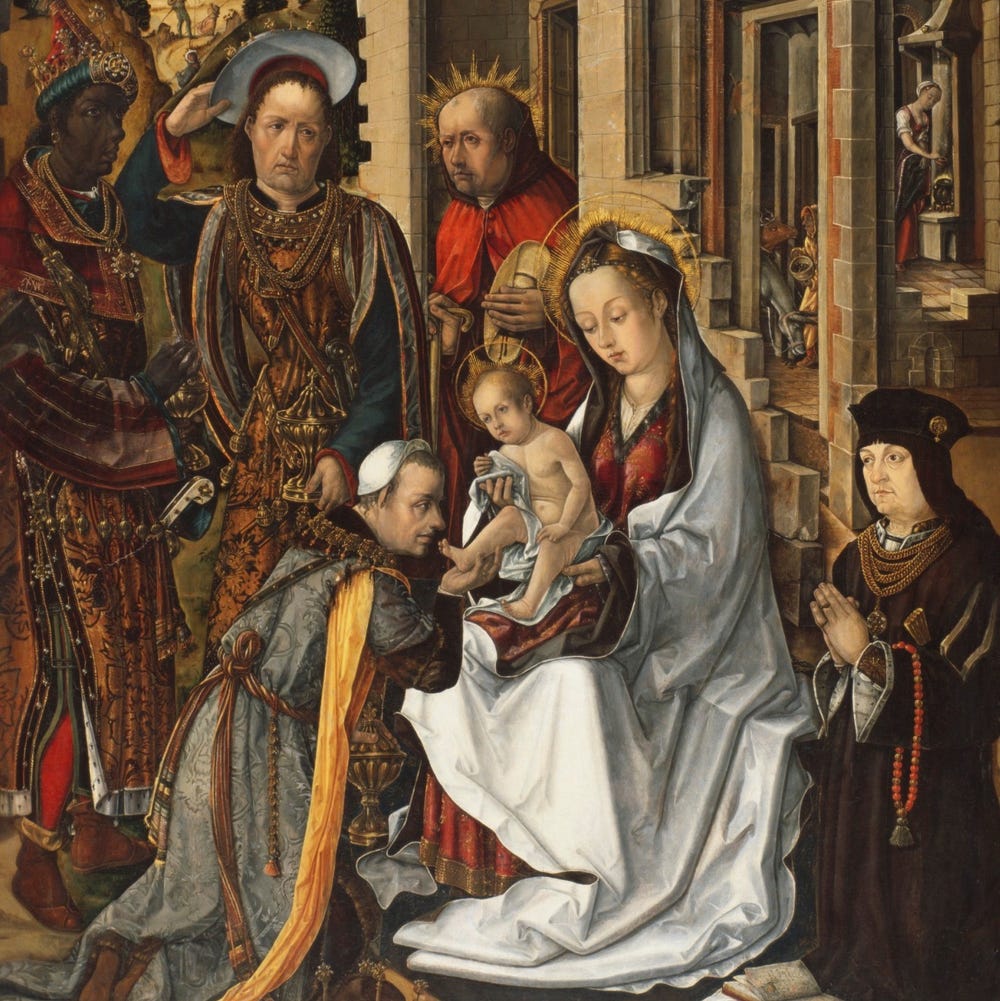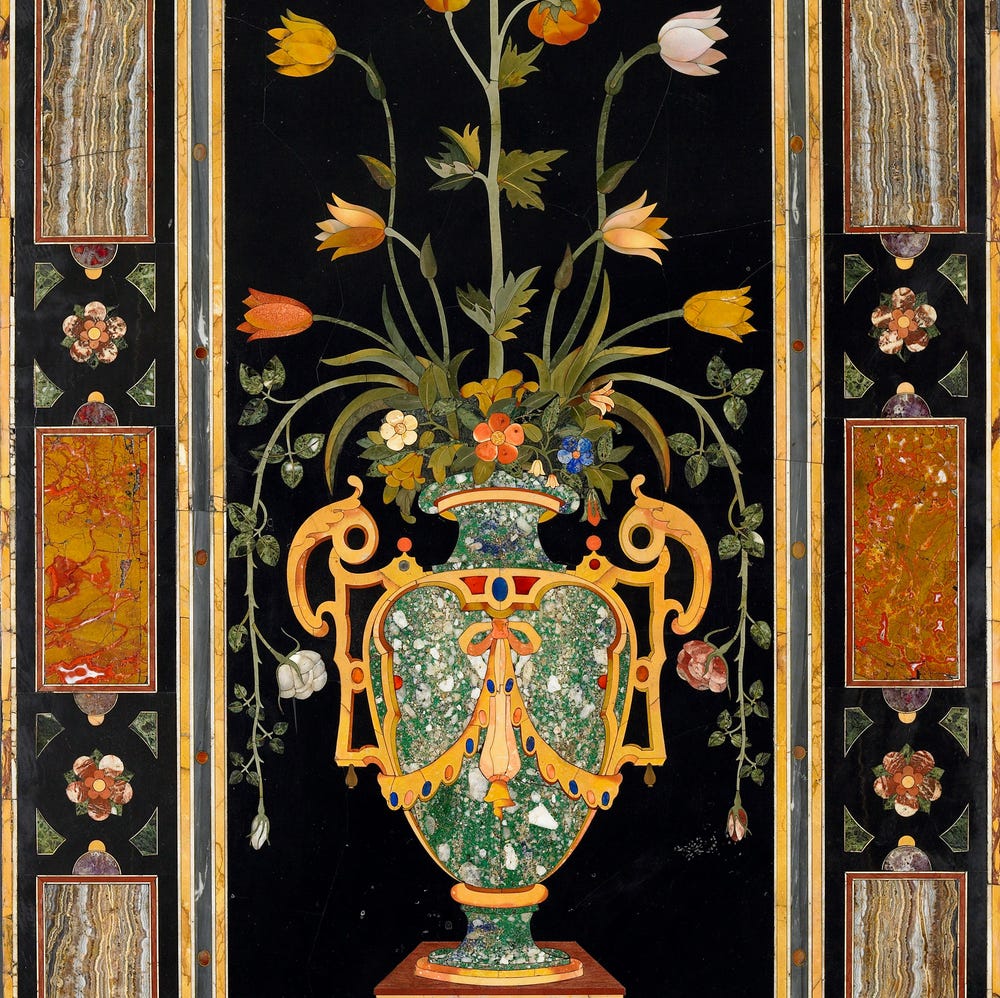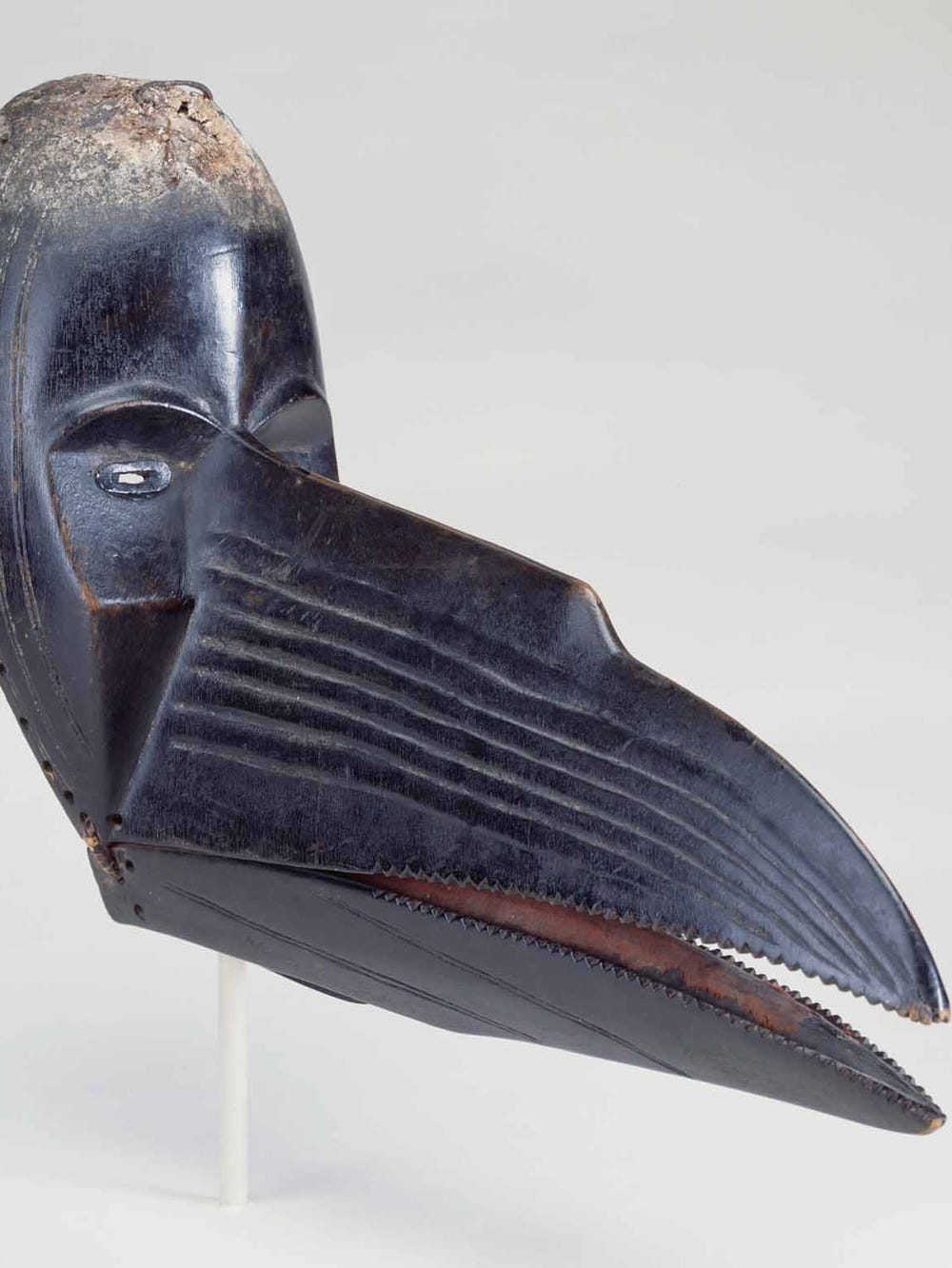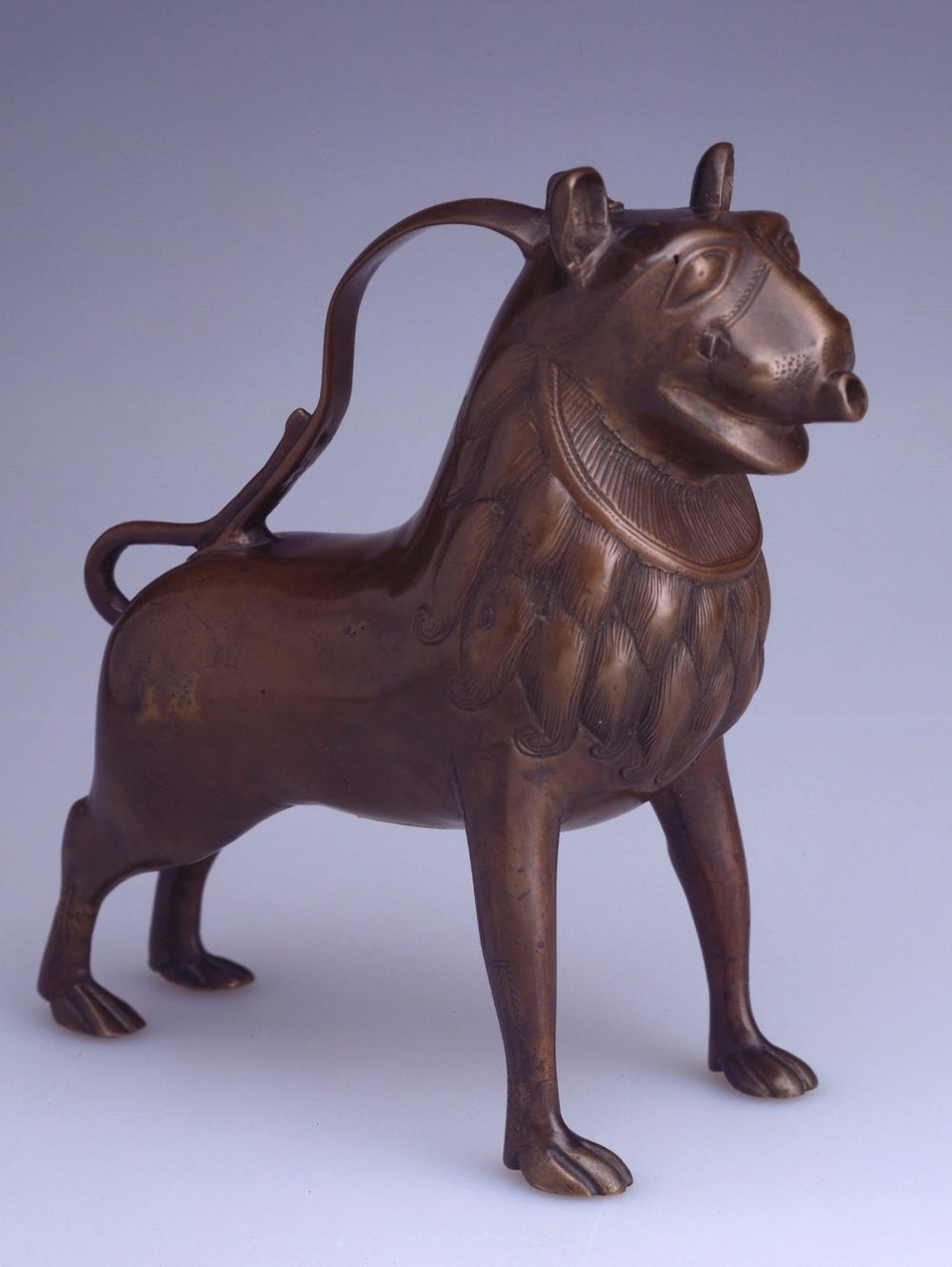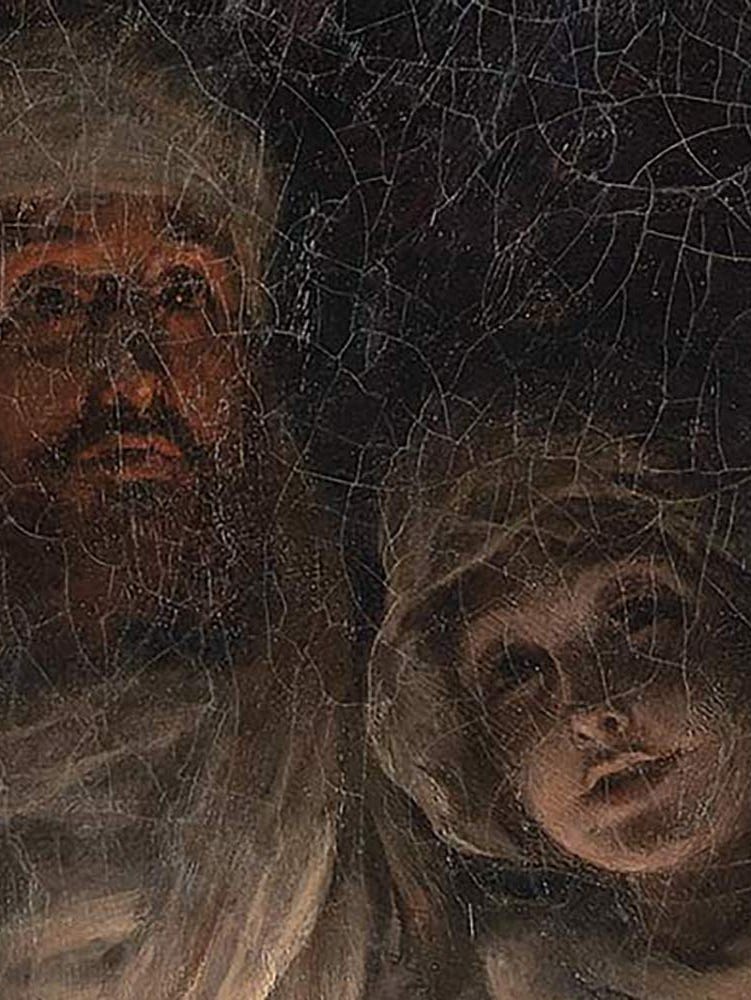Bloody Murder: A Medieval Conflict Between Church and State
By Martin Chapman
April 29, 2021
Separation of church and state is enshrined in the United States Constitution. The country’s founders knew well the history of power struggles between church and state—struggles that date back to antiquity. The framers of the Constitution wanted to avoid establishing a state religion, such as that laid down by Henry VIII in England, and they also wanted to ensure religious freedom—the freedom to practice any faith a citizen wished, or not to practice any faith. A reliquary casket (below) in the collection of the Fine Arts Museums of San Francisco represents the conflict between a king and an archbishop who ruled England—state and church respectively—in the twelfth century, and tells the story of a bloody murder that shook the medieval world.
Chasse with the martyrdom and entombment of St. Thomas à Becket, ca. 1200–1210. Champlevé enamel on copper, 6 1/4 x 5 1/2 in. (15.9 x 14 cm). Fine Arts Museums of San Francisco, Mr. and Mrs. E. John Magnin Gift, 75.18.78
Reliquaries and Chasses
Chasse is the French term for a reliquary casket, or shrine, designed to store the holy relics of a saint. In the medieval era, reliquaries containing fragments of bones, hair, teeth, clothing, blood, or the possessions of a saint were an essential part of the faith of Western Christianity. These relics were believed to convey a spiritual connection to the saint and were often kept in elaborate containers—reliquaries—that were sometimes made of precious materials. They were positioned on or near the altar in churches, where they could be venerated by church members and pilgrims.
Interior of Sainte-Chapelle, Paris. Photography by Michael D. Hill Jr., CC BY-SA 3.0
Many reliquaries, such as the example in our collection, were relatively small and shaped like a casket. Others were large enough to encompass an entire altarpiece or shrine. In some cases, complete chapels were built to house significant relics. One spectacular example is the gothic Sainte Chapelle (consecrated in 1248) in Paris, commissioned by King Louis IX of France (1214–1270) to display his relics of the holy passion, including Christ’s Crown of Thorns.
With the Reformation in the sixteenth century, reliquaries and their contents were dismissed by Protestants as being spurious, or for representing corruption in the church, and many were destroyed in Northern Europe. Even so, relics are still venerated today in the Roman Catholic church and Orthodox Christianity, and in Hinduism and Buddhism.
A Medieval Murder
The Fine Arts Museums’ chasse was created to contain relics of the English saint Thomas Becket, who was murdered in Canterbury Cathedral on December 29, 1170.
Thomas Becket (1119/20–1170), also known as Thomas à Becket, and later canonized as St. Thomas of Canterbury, rose from relatively humble beginnings as the son of a London merchant to become a high-ranking royal servant who famously enjoyed the luxuries of court life. He was close to King Henry II (1133–1189), and served as chancellor to the king, a prominent role. His promotion to Archbishop of Canterbury—head of the English church—in 1162, was to enable the king to rule both state and church.
Becket’s outlook changed radically with his ordination. He adopted a simpler way of living, stepped down from the chancellorship, and overtly challenged the king’s authority over the church. The power struggle that ensued caused a deep rift between the two former friends, culminating in a court case, following which Becket fled into exile in France in 1164. The pope intervened and Becket returned to Canterbury in 1170, but the schism did not heal. Becket flagrantly excommunicated his rival, the Archbishop of York, and other ecclesiastical enemies loyal to the king, escalating the division that resulted in Becket’s murder in Canterbury Cathedral by Henry’s knights in December, 1170.
A 13th-century manuscript illumination, the earliest known depiction of Thomas Becket's assassination in Canterbury Cathedral, circa 1200. British Library: Harley MS 5102, f. 32
Becket’s murder was a momentous event in the history of England and the Roman Catholic Church. The murder shocked the medieval world, creating a myth that changed the course of English history and questioned the relationship between church and state—a dynamic that would play out again with Henry VIII and the English Reformation in the 1530s.
Although Henry II atoned for the action of his knights by making his own humble pilgrimage to Canterbury, history does not favor the king in his battle of wills with Becket. Becket, for his part, was unpopular during his life and behaved in a high-handed manner at times, including making threats to the king and excommunicating his rivals against the wishes of the pope. However, with his murder, Becket was seen as defending the power and authority of the church against the crown, and he was very swiftly canonized as a saint in 1174.
His relics, often remnants of his clothing or vials of his blood, were placed in reliquaries that were revered across Christian Europe. Churches and chapels were dedicated to Becket in France, Spain, and Italy, a reflection of the deep impression the saint’s martyrdom made on the church, as well as the power of the miracles associated with him.
St Thomas Becket's consecration, death and burial wall paintings in Santa Maria de Terrassa (Terrassa, Catalonia, Spain), romanesque frescoes, c. 1200. Image: Enfo, CC BY-SA 3.0
A Shrine at Canterbury
The immediate physical and spiritual outcome of Becket’s murder was the building of one of the most highly visited shrines in Europe, with pilgrims flocking to Canterbury in search of miracles of healing. More than 700 miracles were reported in the years following Becket’s death, which were memorialized in the stained-glass windows at Canterbury cathedral (below).
Stained-glass window; Thomas Becket Emerges from Shrine to Heal Sick Man, Canterbury Cathedral Trinity Chapel, nIII 45
Geoffrey Chaucer’s Canterbury Tales, written between 1387 and 1400, depicts a fictional pilgrimage from London by a group of characters to Becket’s very real shrine in the cathedral at Canterbury. The pilgrims in Canterbury Tales would have seen a spectacular edifice erected in the Trinity Chapel for the saint’s remains. Consecrated in 1220, it was composed of a large, painted, gabled outer housing, similar in form to our reliquary, that could be raised on a pulley to reveal a gold and silver effigy and coffin set with gemstones.
Watch: 3D Visualization of Trinity Chapel
Although it became a major site for pilgrims coming from all over Europe in the following centuries, Becket’s shrine did not survive the Reformation. Ironically, in 1538, Henry VIII, whose own struggles with the church and papal authority were major factors during his reign, declared Becket a traitor and ordered the shrine to be destroyed. It is said that twenty-five cartloads of gold, silver, and precious jewels were removed from the cathedral at that time.
Champlevé Caskets from Limoges
This small and portable type of Becket reliquary casket was made in Limoges in southwestern France in the decades following Becket’s murder. Some fifty-two similar examples are known to exist. They are constructed out of plates of gilded copper decorated with champlevé enamel and nailed to a wooden core. Champlevé enamel is a technique used during the medieval period of decorating objects to produce vivid coloring. It was made by carving out hollows in the copper, which were filled with vitreous enamel. After polishing, the copper surround was gilded to produce a very rich contrast with the enamel. The cavity inside the reliquary would have held the relics.
Chasse with the martyrdom and entombment of St Thomas à Becket (details), ca. 1200–1210. Champlevé enamel on copper, 6 1/4 x 5 1/2 in. (15.9 x 14 cm). Fine Arts Museums of San Francisco, Mr. and Mrs. E. John Magnin Gift, 75.18.78
Like the other surviving Becket reliquaries made in Limoges, ours is in a gabled house form decorated with scenes from the death of Thomas Becket. On the front is the principal scene of his murder (above left), in which two of the four knights attack Becket at the altar of Canterbury Cathedral. The scene on the upper sloping panel (above right) depicts Becket, in his shroud, being entombed at his funeral. The relics originally contained in the reliquary no longer survive.
The Becket chasse is on view in Gallery 2 in a refreshed display at the Legion of Honor.
Text by Martin Chapman, Curator in Charge, European Decorative Arts and Sculpture and interim Curator in Charge, European Art.
Learn more about European decorative arts and sculpture at the Legion of Honor.
